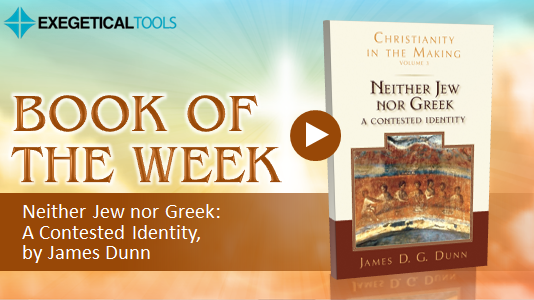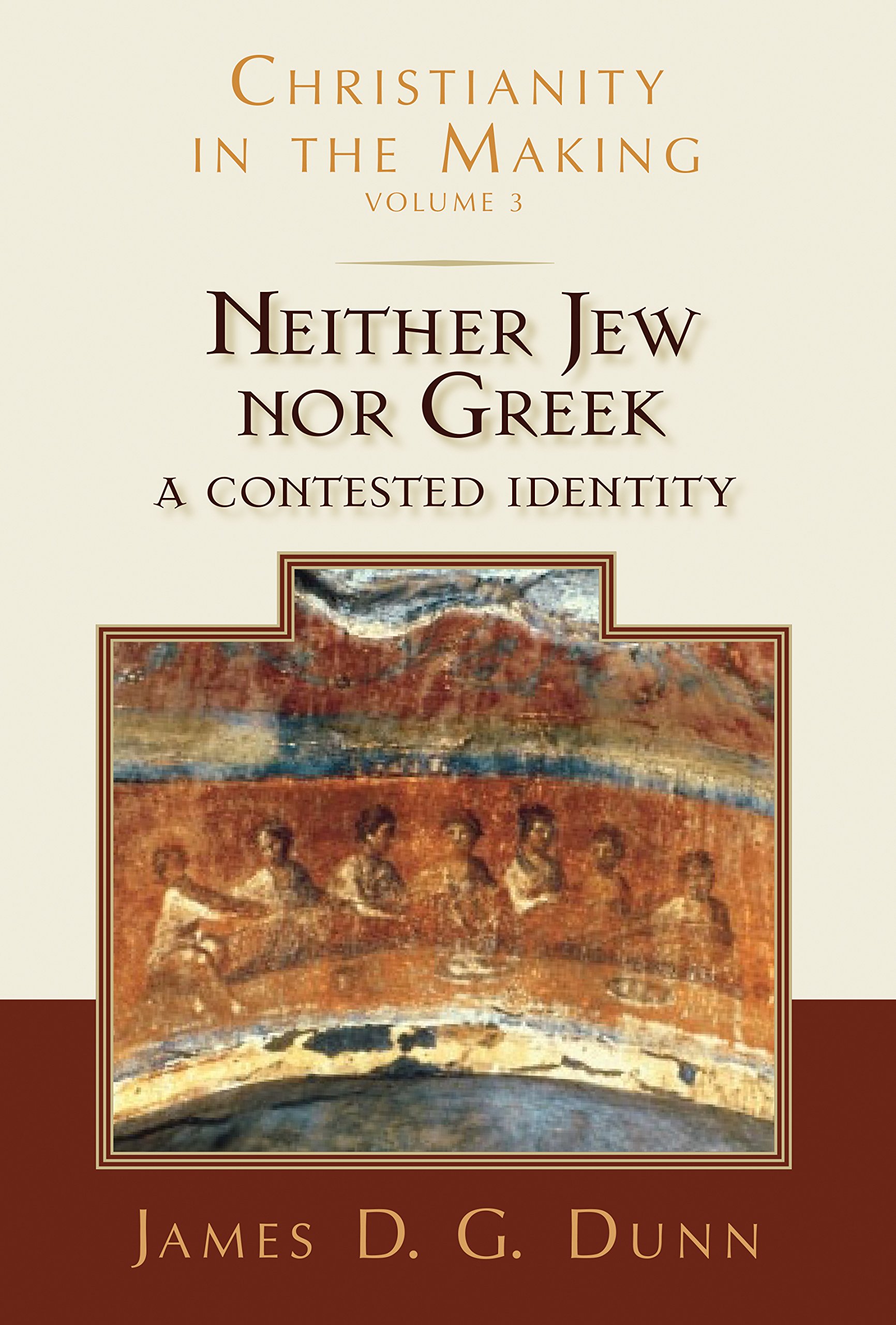
The history of early Christianity has taken one of the prime spots in recent NT research. Revisionist histories abound, and new perspectives on old data are welcome. But the attempts to canvas in detail the first 150 years of Christianity are few and far between.
James Dunn doesn’t shy away from a challenge. Once one gets beyond the NT documents, the nearest history is Eusebius’ Ecclesiastical History in the fourth century. So how would one go about studying this early period, and how would one tell the history? Dunn has undertaken this task in his third and final volume of his Christianity in the Making series, Neither Jew nor Greek: A Contested Identity.
The first and second volume were not lacking in detail and analysis, each spanning over 1,000 pages. The first volume focused on Jesus in memory, analyzing the Gospels, while the second volume focused on the period before 70 AD, using Acts and Paul’s letters as sources. This third volume is challenged with the task of discerning which sources give reliable information of the years 70-180 AD and creating a history from scratch.
Here are some unique features to Dunn’s approach:
- Rather than tell history from the perspective of the “winners” (i.e., the orthodox) as Eusebius did, Dunn wants to tell the story from a more neutral perspective, ensuring that even the heretics get their say. This approach falls in line with those who have been influenced by Walter Bauer’s approach to early Christianity. Positively, it does allow us to focus on the parts of Christianity that are often glossed over because of their heretical status.
- Dunn analyzes the reception of Paul especially in the second century. Many of the early heresies centered over the exegesis of Paul’s letters, so chapter 47 of this volume (the chapter count continues from vols. 1 and 2) is especially helpful for studying these controversies (675-723).
- The Gospel of John provides a unique testimony to the history of Jesus by its own unique developments of the tradition, but also because the sources come from eyewitness testimony (757-760). Although he does not identify a specific John as the author, he clearly gives this Gospel historical value that it is not often attributed.
- The book as a whole provides an analysis of the role of each of the major early church leaders: James, Paul, Peter, John (and Thomas as well). While no one will agree with Dunn’s analysis on every detail (e.g., I’ve argued elsewhere that his take on Gal 2:11-21 is mistaken), as a holistic project this volume and the entire series is incredibly significant and useful.
- Dunn writes like a lecturer. That is, he not only gives you his analysis, but he shows you how he gets there. He begins the volume by discussing which sources he will use and what issues are involved in using them. As he introduces a subject, he explains carefully his approach and the critical issues involved. Because of this format, even one who disagrees with much of Dunn’s analysis can still gain a framework for studying early Christianity.
Much more could be said about this 825 page book (plus appendices). But let me just say what is most important. This series involves many assumptions and arguments that have been made elsewhere by professor Dunn. While one might disagree with him on some issues, one cannot deny that he is among the foremost of NT scholars alive today. He has given us around 3,000 pages analyzing the history of Christianity from the death of Christ to 180 AD. His work deserves to be appreciated and studied, and one can certainly learn many things from Dunn, especially how to go about doing the work of studying the early church. May this work be found useful in the hands of many students, pastors, and scholars.
Find it here on Amazon.



One comment